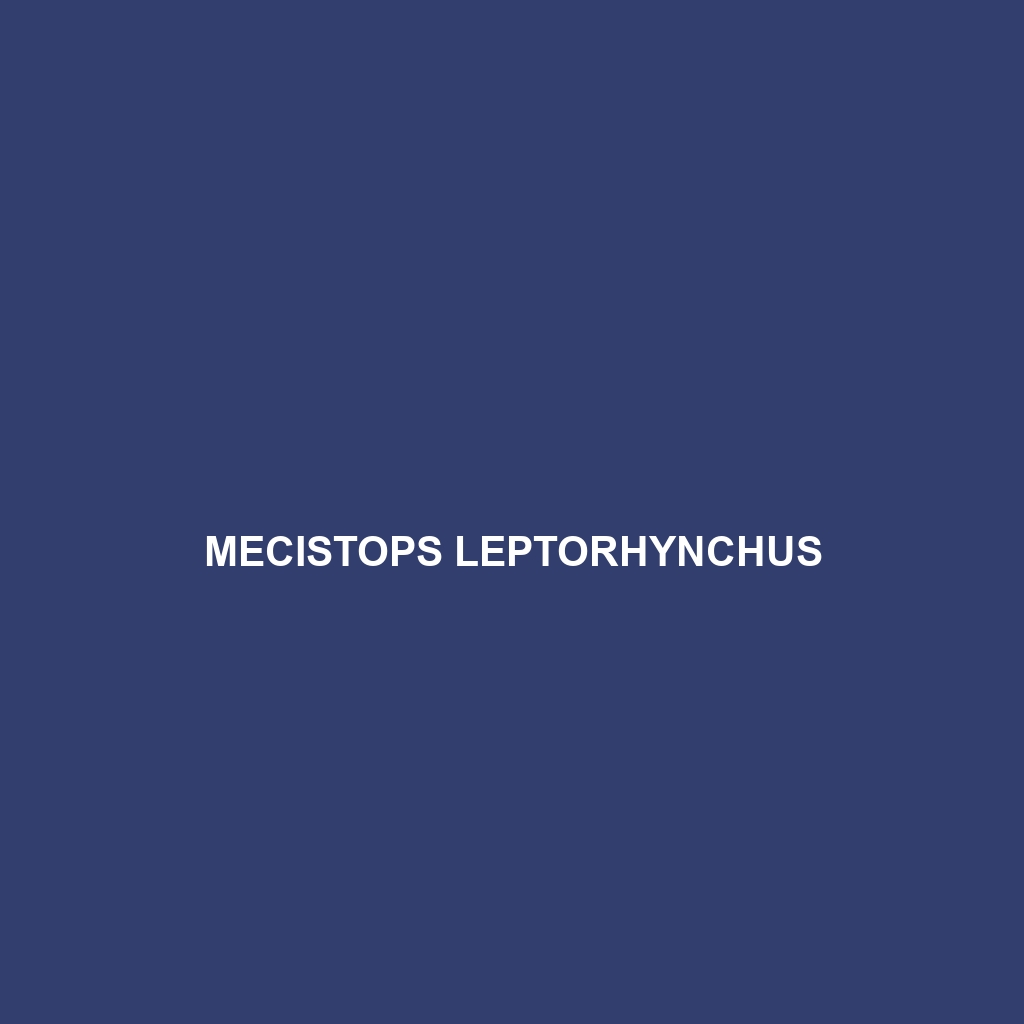Common Name
Mecistops leptorhynchus
Scientific Name
Mecistops leptorhynchus
Habitat
Mecistops leptorhynchus, commonly known as the African slender-snouted crocodile, primarily inhabits freshwater ecosystems across Central and West Africa. These reptiles are frequently found in rainforests, savannas, and temperate forests, where they prefer slow-moving rivers, lakes, and marshes. The species flourishes in these rich environments, typically located in areas with abundant vegetation that provides cover and nesting materials. The typical climate of their habitat includes humid tropical conditions, ensuring a consistent water source crucial for their survival.
Physical Characteristics
Mecistops leptorhynchus is characterized by its elongated snout, which is adapted for catching fish and small aquatic prey. Adult individuals can measure between 2.5 to 4 meters (8 to 13 feet) in length, with males generally being larger than females. The coloration of these crocodiles is typically a mix of dark brown and olive, providing excellent camouflage in their natural habitat. Unique features include a slender physique and long, pointed teeth, allowing for a specialized feeding strategy. These physical traits are distinctive enough to set them apart from other crocodilian species.
Behavior
This species exhibits fascinating behaviors typical to crocodilians, such as basking in the sun during the day and becoming more active at night, showcasing a nocturnal behavior pattern. Mecistops leptorhynchus generally leads a solitary life but may come together during the breeding season. Their social interactions are often hierarchical, especially regarding territory disputes between competing males. Mating rituals involve elaborate displays, including vocalizations and water splashing to attract potential mates.
Diet
Mecistops leptorhynchus is primarily carnivorous, feeding on a diet that consists of fish, amphibians, and small mammals. Their diet can also include aquatic insects and crustaceans, showcasing their adaptability to available food sources. They have developed a strategic hunting behavior, often stalking prey in the water and using their stealth to ambush effectively. The diet varies seasonally, with fluctuations in food availability influencing feeding patterns.
Reproduction
The reproductive cycle of Mecistops leptorhynchus begins with the mating season occurring in the rainy months when water levels rise. Female crocodiles typically create nests on sandy or grassy riverbanks, laying between 20 to 40 eggs. The eggs incubate for approximately 70 to 90 days before hatching. After their birth, the mother displays nurturing behaviors by escorting her hatchlings to the water, providing protection from predators. This parental care is vital for the survival of the young, who remain vulnerable during their early stages.
Conservation Status
Mecistops leptorhynchus is currently listed as vulnerable on the IUCN Red List due to habitat loss and poaching pressures. The destruction of their natural habitats, primarily through deforestation and agricultural expansion, poses a significant threat to their populations. Conservation efforts are focused on habitat restoration and legal protection to combat poaching. Various organizations are raising awareness and conducting field studies to ensure this unique crocodile’s continued survival.
Interesting Facts
One intriguing aspect of Mecistops leptorhynchus is its ability to remain submerged for extended periods, sometimes up to two hours, allowing it to remain stealthy while hunting. Additionally, these crocodiles are known for their unique communication methods, utilizing low-frequency sounds to communicate with other crocodiles. Their elongated snout not only aids in hunting but also helps in foraging among dense aquatic vegetation, making them especially adept at navigating their habitats.
Role in Ecosystem
Mecistops leptorhynchus plays a crucial role in its ecosystem as a predator, helping maintain the balance of aquatic species populations. By preying on fish and small mammals, they contribute to the regulation of these populations and thus promote biodiversity within their habitat. Furthermore, as trophic creatures, they provide a food source for larger predators, including birds of prey and larger mammals. Their presence in the ecosystem indicates a healthy, functioning environment, serving as a keystone species in their native habitats.
